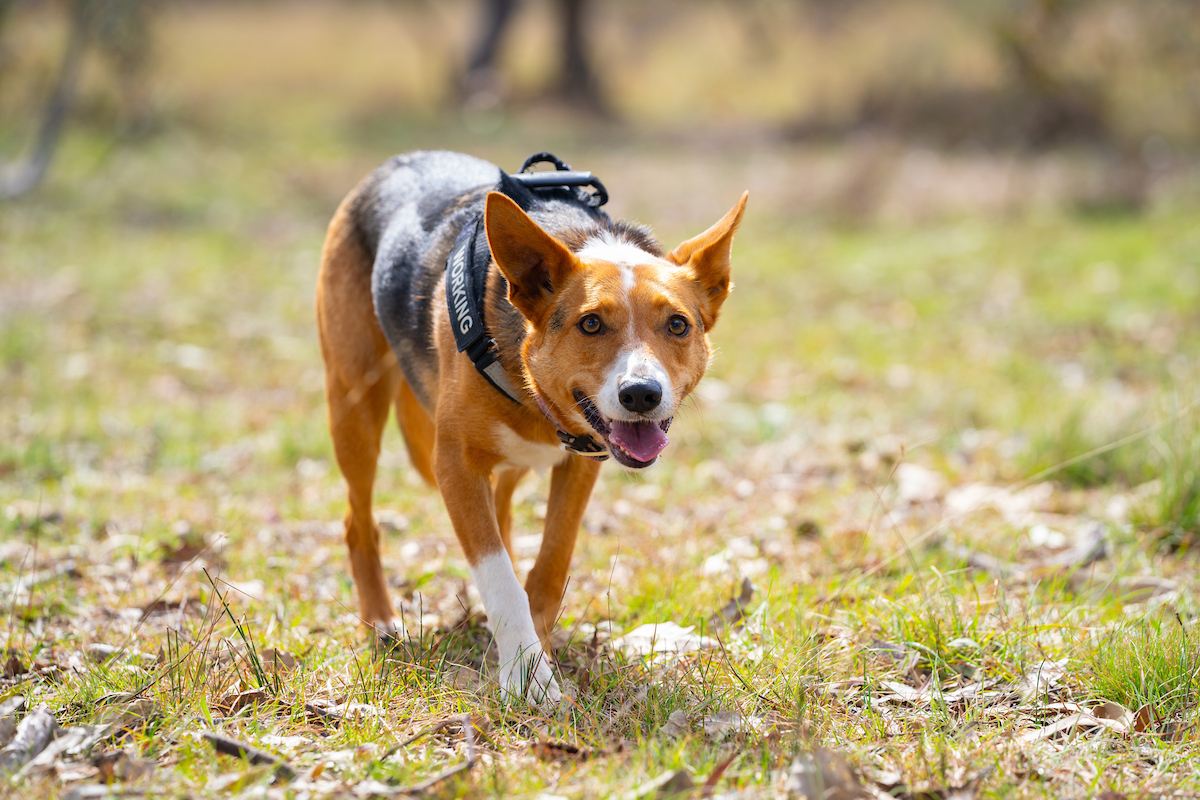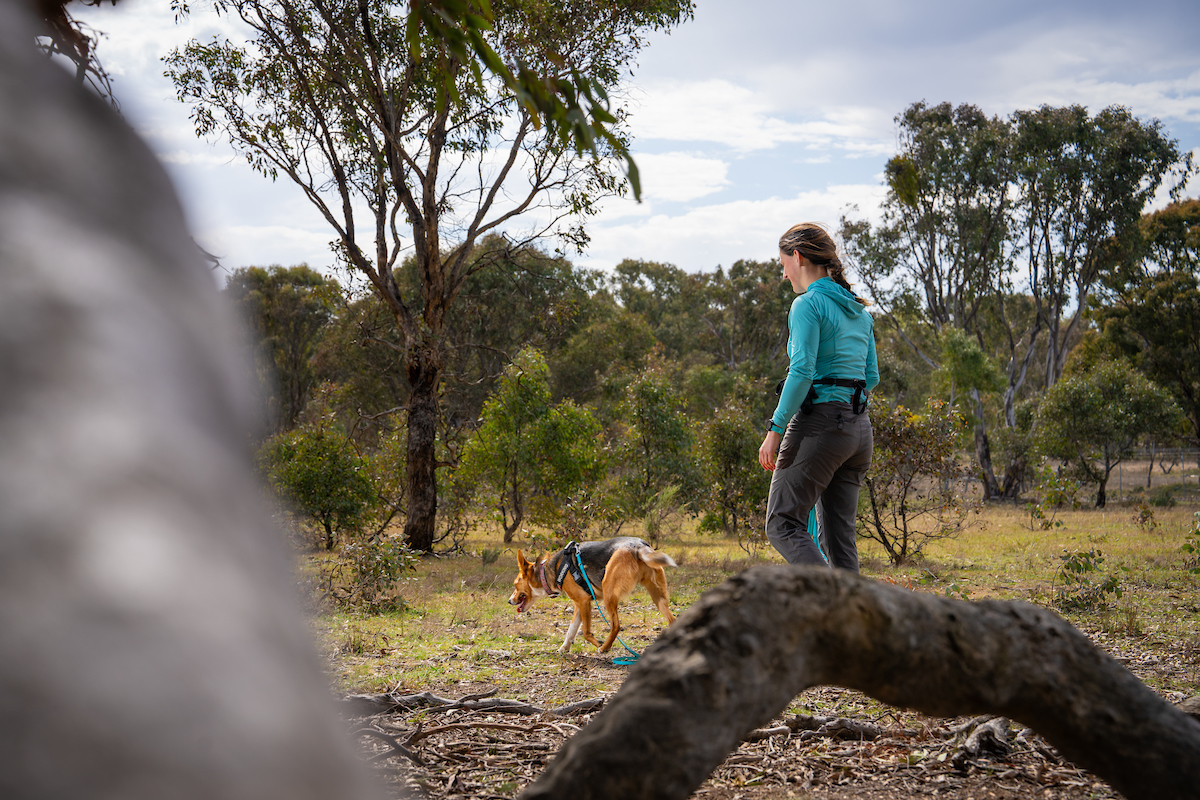
Meet Koda, a very good girl who is sniffing out technology to advance ecology
This is Koda. She’s got an adorable snoot, and an insatiable curiosity for exploring the world with her nose.
“She's very perceptive, emotional, caring and deliberate. She does everything with purpose,” says Koda’s owner, Shoshana Rapley, a PhD researcher at the Fenner School of Environment and Society.

Koda, a mix of a few breeds but mostly Kelpie, came to live with Rapley in 2021 as a puppy. Koda and Rapley have spent a lot of time together over the years.
Koda is a very loved member of the family, but she keeps Rapley on her toes.
“The way I like to describe it is she's got a lot of big feelings, so her baseline level of anxiety is pretty high,” explains Rapley.
One thing that Koda has always loved is frisbee. You might call it an obsession. Frisbee is great for exercise and keeps her busy, but it can work her up into overexcitement, Rapley explains.
“I started doing scent work with her, and she loved it. She took to it straight away,” says Rapley. Sniffing can be a really calming and enriching activity for dogs – often more so than simply exercising.
The scent work involved playing hide and seek with objects for Koda to find using her amazing sense of smell. Gradually the game became harder, and the objects changed. Of course, Koda nailed the assignment.
That’s when Rapley had her big idea.
As an ecologist, Rapley had a problem in her PhD research where she had expensive GPS devices for tracking birds that were going missing in the bush. Back at home, Koda needed a job. Why not combine the two?
Rapley’s study species – reintroduced bush-stone curlews in Mulligans Flat Nature Reserve – wear the GPS devices on their backs so that Rapley can trace their movements in her research. Sometimes the tracking devices will drop off the curlews, or sadly an individual bird will die and the devices are really hard for Rapley to find in the vegetation and ground cover.
That’s when she started training Koda to sniff out the electronic parts and plastic that comprise the GPS devices.
Koda was only eight months old when she went out on her first field mission with Rapley to detect GPS devices. In the three years since then, Koda has made field work at Mulligans Flat so much easier and faster, Rapley says. Rapley is grateful for the guidance from the conservation detection dog community, and especially her PhD supervisor Dr Heather McGinness, while she was learning how to train Koda.
“Because I'd never had a dog before Koda, I didn't realise how pivotal it was going to be. Getting Koda has been a turning point in my life,” Rapley explains.
“And doing the scent work has been really, really good for helping Koda’s moods.”
The pair also are starting to do contract work for other projects.
Finding electronics is just one of the roles for detection dogs in conservation. A common use is to survey around the base of wind turbines for dead bats or birds to monitor if the wind farm is causing environmental harm. Others are used in eradication programs of foxes, feral cats or rats, and are trained to sniff for specific animals or their scats.
Usually, the person and detection dog come as a team, Rapley says. Rapley guides Koda using her ecological knowledge, and Koda searches the area, sniffing in likely places. Each could work with someone else, but they’re better together.
“It's about reading micro-cues with Koda,” says Rapley. “Sometimes, especially when she's really excited or there's a lot going on, it'll be subtle cues that she's done a find. There's been times where I’ll say ‘Oh, she's found something’. And other people are like, ‘Really?’”
As well as scent training, Rapley has worked hard to help with Koda’s anxiety. She can get quite stressed out around other dogs.

It is actually not uncommon for detection dogs to have struggles in their normal pet lives, but to then thrive in their new job, Rapley says. Many were rescue dogs that were abandoned by previous owners. Now, they get to have a loving home and a driving purpose.
“If she didn't have such big feelings, she wouldn't be so good at this,” Rapley says.
As she talks, Koda looks up at her friend and licks Rapley’s face.
“I can't imagine not doing work with my dog. It's been a game changer. And I just have her to thank for that.”




